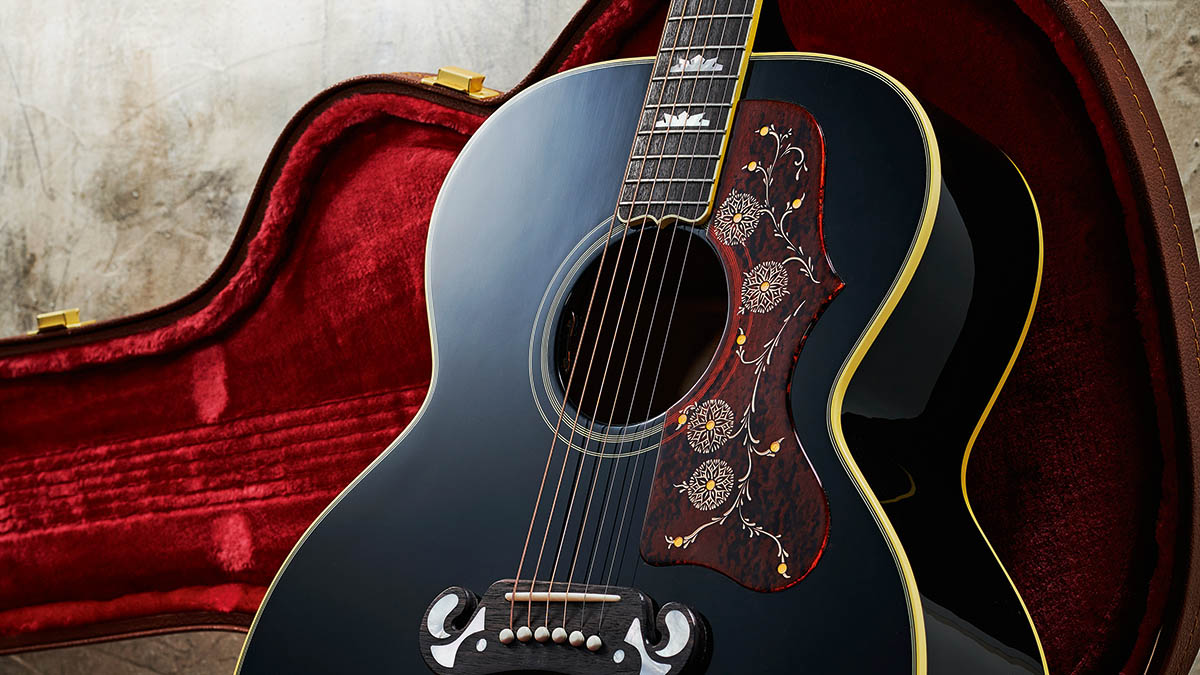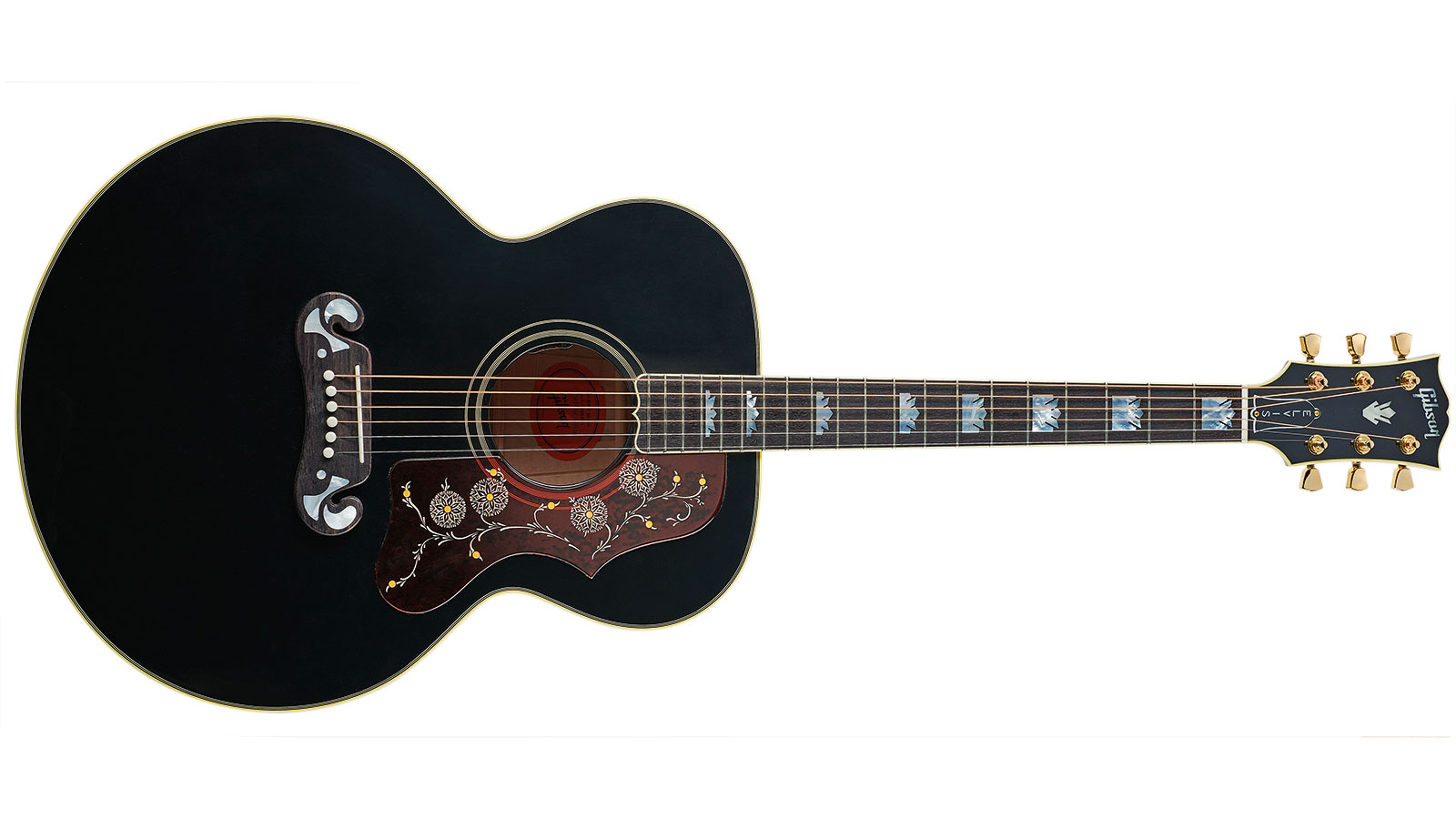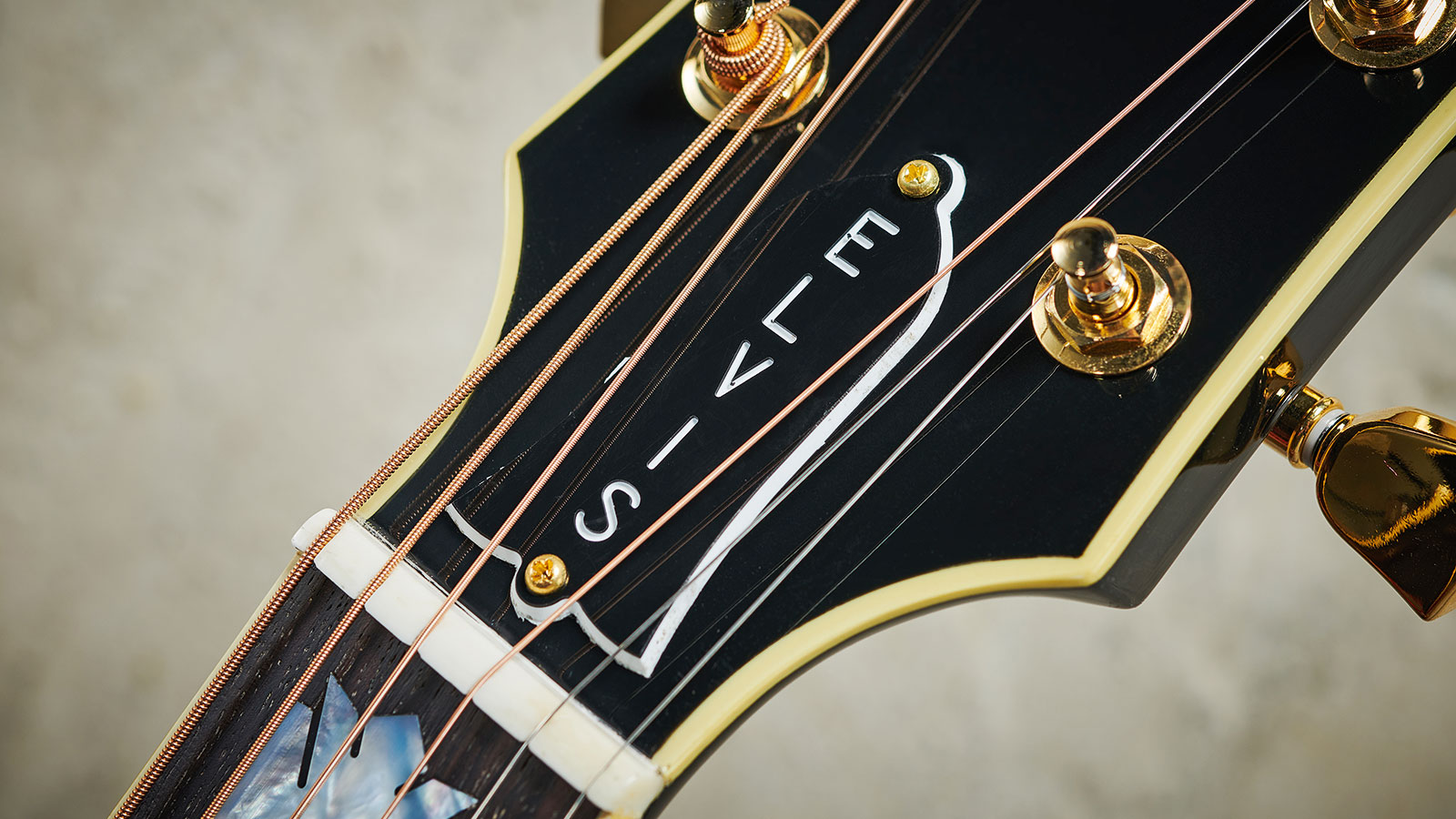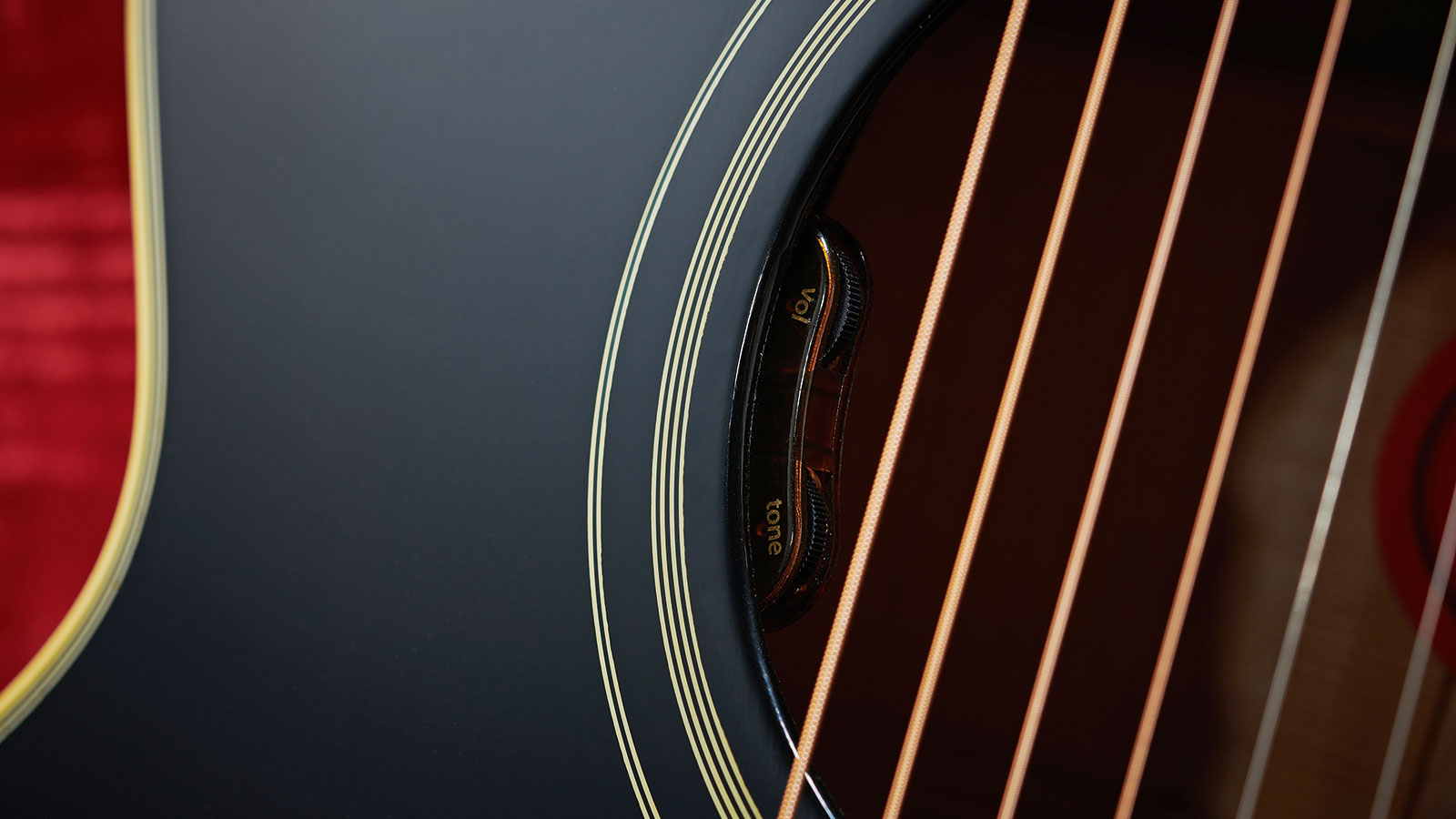Why Gibson’s Elvis SJ-200 has us all shook up
The King of the Flat-Tops does not get any more regal than this

Elvis Presley received his 1968 ebony SJ-200 as a gift at a 60s recording session and, according to his guitarist Scotty Moore, first used it on stage in Tusla, Oklahoma, on 1 March at the start of his 1974 tour.
Presley had been an SJ-200 convert since obtaining his original 1956 model, and its massive size and opulent appointments could not have been more suited to the king of rock ’n’ roll.

The model has undergone constant change since its introduction in 1937, so Presley’s ‘Las Vegas’ era instrument was also naturally of its time.
As such, it featured a three-piece maple back, an adjustable ‘closed mustache’ bridge with hourglass and teardrop pearl inlays, rosewood fingerboard with graduated pearl ‘crown’ inlays on a two-piece maple neck, plus a set of gold-plated Kluson ‘waffleback’ tuners.

Our guitar has the unpopular ‘tone sucking’ adjustable bridge saddle replaced with a traditional bone ‘set’ version, the tuners are Grovers with the same ‘tulip’ buttons, and the rosewood ’board and bridge are exceptionally dark compared with the redder timbers on the King’s guitar.
An instrument that’s designed to be used on stage, ours also comes with LR Baggs’s natural-sounding VTC system, with discreet soundhole tone and volume controls.

Other appointments include the beautifully applied ebony nitro finish, compound dovetail neck-to-body joint, multiple body and single neck and headstock bindings, and 20 vintage-style frets on the 305mm (12inch) radius fingerboard. It’s a real looker!
Get The Pick Newsletter
All the latest guitar news, interviews, lessons, reviews, deals and more, direct to your inbox!
Often referred to as the ‘Whispering Giant’, this model is surprisingly not the loudest of guitars. But ours is beautifully balanced across its range with spritely trebles, punchy mids and a bass-end that vibrates through the ribcage.
The SJ-200 is a great recording guitar, too – legendary performances include The Who’s Pinball Wizard, The Beatles’ Here Comes The Sun, and Jimmy Page’s gloriously fingerpicked Babe, I’m Gonna Leave You.
It won’t be made in huge numbers, so the Elvis SJ-200 might appeal to collectors rather than players. And that’s sad, since it’s one of the most handsome stage guitars ever, the Baggs pickup only adding to its usability.
So, why not grab yourself a ‘Big Hunk Of Love’ while you can, or you might end up in ‘Heartbreak Hotel’ or, worse, ‘Crying In The Chapel’...

In the late '70s and early '80s Neville worked for Selmer/Norlin as one of Gibson's UK guitar repairers, before joining CBS/Fender in the same role. He then moved to the fledgling Guitarist magazine as staff writer, rising to editor in 1986. He remained editor for 14 years before launching and editing Guitar Techniques magazine. Although now semi-retired he still works for both magazines. Neville has been a member of Marty Wilde's 'Wildcats' since 1983, and recorded his own album, The Blues Headlines, in 2019.
“Among the most sought-after of all rhythm guitars… a power and projection unsurpassed by any other archtop”: Stromberg has made a long-awaited comeback, and we got our hands on its new Master 400 – a holy grail archtop with a price to match
The heaviest acoustic guitar ever made? Two budding builders craft an acoustic entirely from concrete because they “thought the idea was really funny”





![[from left] George Harrison with his Gretsch Country Gentleman, Norman Harris of Norman's Rare Guitars holds a gold-top Les Paul, John Fogerty with his legendary 1969 Rickenbacker](https://cdn.mos.cms.futurecdn.net/TuH3nuhn9etqjdn5sy4ntW.jpg)





